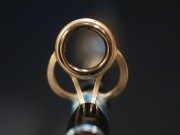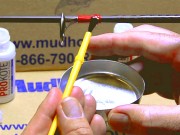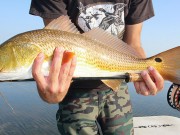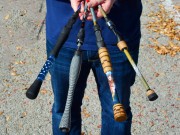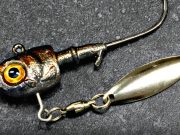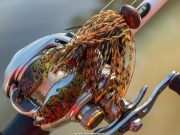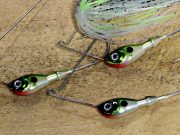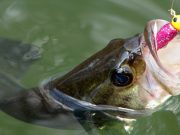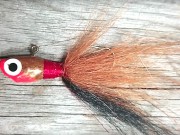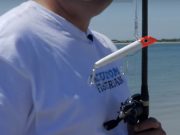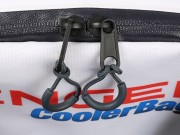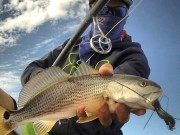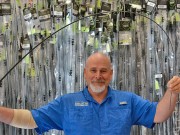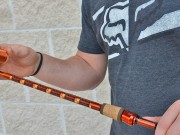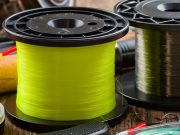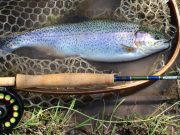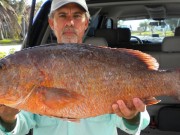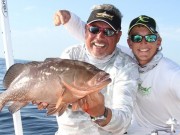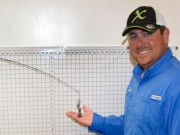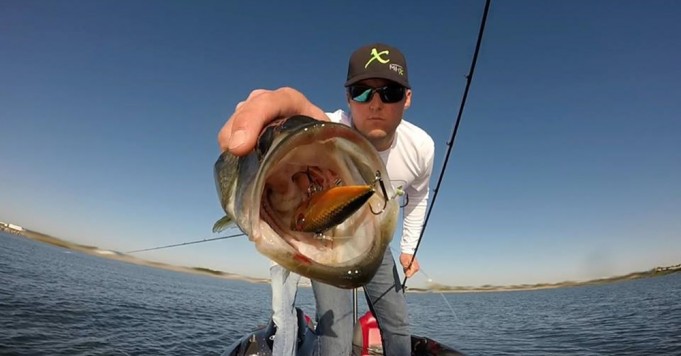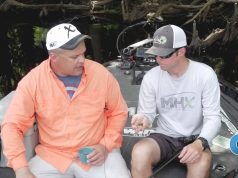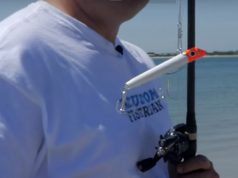With all of the choices available, this article is for the beginner who wants to understand the basics in crankbait selection, and a few helpful hints on when and how to use them.
The Standard Crankbait
The standard crankbait comes in a variety of sizes, averaging between 2-8 inches for freshwater, and are often larger for saltwater.

When retrieved, the water runs up the lip (or bill) of the bait, causing it to wobble on its axis, imitating the vibration and motion of a normal bait fish. This ‘action’ can be modified by a variety of available options;
a. Different size lure lips:
The smaller the crankbait’s lip, the shallower the dive depth the lure can pass. Conversely then, the larger the lip, the deeper the lure can travel. Keep in mind that the type of fishing line used also can effect the depth. If a crankbait is rated to dive 5 feet, using a smaller diameter line may add another foot. Some crankbaits can run 15 feet – or even lower with accessories like a down rigger.
Another trick to raise or lower the crankbait depth on retrieve is to experiment with raising your rod tip (to go shallower) or lowering the rod tip (to go deeper). If you have a long line out (very far cast) or running the lure in significant current, your may want to use a low slack line (like a braided line) so that when you go to set the hook, there is not a long bow in the line, which may lead to the fish getting off.
b. Rattling chambers:
In an effort to create more notice in the water, some crankbaits now come with a hallow chamber in the lure’s body where there are basically small bearings that clank together when running in the water. This noise is meant to actually trigger strikes when the fish are finicky, and help locate the lure in heavily stained water.
c. Buoyancy:
Crankbaits can be sinkers, floaters, or be neutral in the water.
Sinking means just that – you cast out and let the lure slowly sink to a desired depth, then start your retrieve.
Floaters obviously then float, and are usually retrieved in a twitching motion to resemble a crippled bait fish, but they are also used in a slower retrieve.
Crankbaits with neutral buoyancy means when you stop your retrieve, the lure actually stays at the depth, where the other types would continue to sink – or rise to the surface.
d. Different colors:
Like all lures, they come in a wide variety of colors and prints.
Crankbaits are a great choice when you are out to catch a variety of species.
Lipless Crankbait
Lipless cranbaits share just about all of the attributes of the standard crankbait, the major difference obviously is in the name – it is lipless.
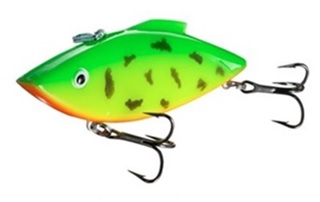
This means that on a standard retrieve, they may only run up to 5 feet in depth. However, because they come in 2 types of buoyancy, there are many ways to work them at different depths.
Lipless crankbaits that sink can be cast out, and let the lure drop to the desired depth, then retrieved. Pausing slightly at times will aid at keeping the lure at the desired depth. Lipless crankbaits that float can be run just below the surface, often retrieved in a ‘pull and wind’ motion.
Meaning, once the lure hits the water, reel in the slack, then turn your torso while holding the rod to your hip, then turn back while winding up the newly created slack line.
Many lipless cranks also have a rattler built in.
Minnow Style Crankbait
Minnow style refers to the longer, narrower shape of the lure’s body. The slimmer design creates a ‘tighter’ wiggle in the water, creating an entirely different ‘action’ in the water.

Like the standard crank, they come in a variety of lip sizes to run the lure at different depths, offered in a wide array of colors, and can be floaters, sinkers or have neutral buoyancy.
The tighter wiggle actually creates a faster vibration, and you can feel the difference while retrieving the lure. So as to not interfere with the lure’s action, minnow style crankbaits usually come with smaller treble hooks, and are best fished in waters with less weeds and obstructions.
Minnow Jointed Style Crankbait
One unique feature in the minnow style is that they come in a “jointed” or “broke-back’ form factor, where there is a swivel joint in the center of the body.

This creates an exaggerated action. With the body in one unit – the action is a tight and narrow wobble. With the two sectioned body, the wobble is an exaggerated back and forth sway – and a very noticeable difference.
Top Water Favorite
One of our favorite ways to fish the minnow crankbait is to take a floating silver body with either black or blue stripe on top. Cast it out NEXT to cover (with all the small treble hooks you don’t want to mess with the muck) and let it sit until all the ripples are gone.

Then, flick the rod tip in a downward motion once or twice – in a twitching motion, and real in the slack. Let the lure surface again and wait several seconds. Then repeat in random intervals.
The popping sound it creates when jetting into the water strongly resembles a hurt bait fish, and when you get a strike it is on top of the water, and sometimes even the fish comes out of the water.
Watching that surface strike is awesome fun!




